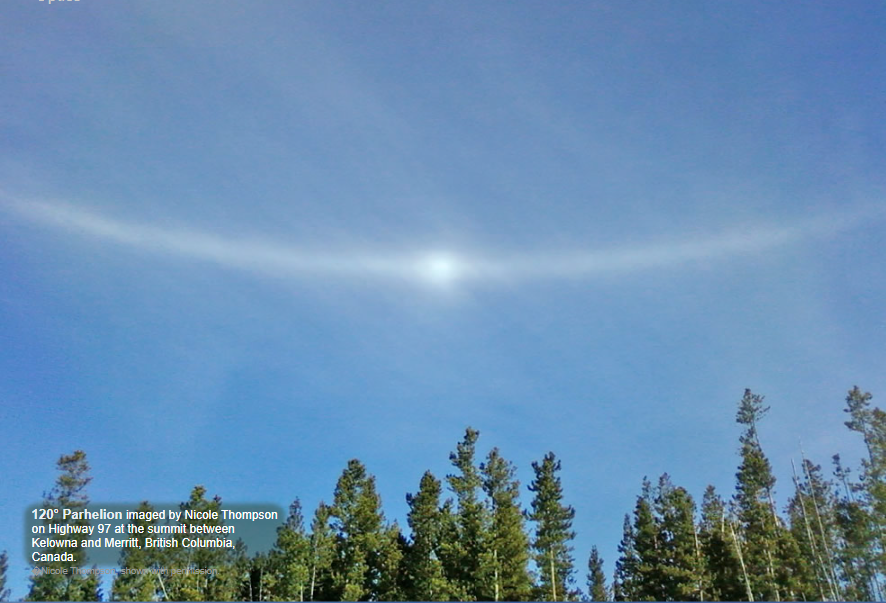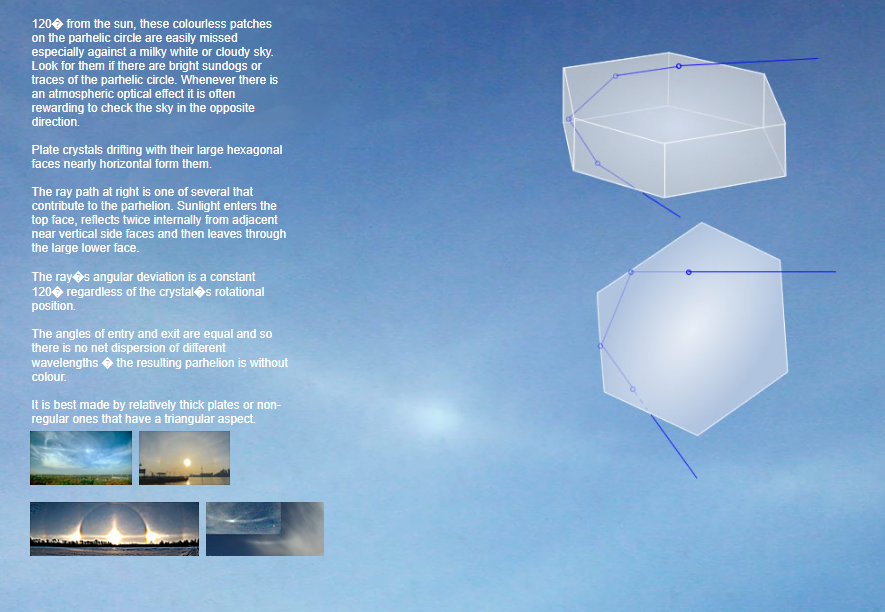White parhelia
White Parhelia: A Phenomenon of Atmospheric Optics
When it comes to atmospheric optics, there are various captivating phenomena that can occur, and one of them is known as white parhelia. Parhelia, also referred to as sundogs or mock suns, are bright spots that appear on either side of the sun, forming a halo-like effect. These phenomena are caused by the interaction of sunlight with ice crystals in the atmosphere. While parhelia are often accompanied by vibrant colors, there are instances where they appear colorless, creating what is known as white parhelia.
White parhelia are patches of light that can be easily overlooked, especially against a milky white or cloudy sky. They can be observed at approximately 120° from the sun, typically in the presence of bright sundogs or traces of the parhelic circle. It is worth noting that whenever there is an atmospheric optical effect, it is often rewarding to check the sky in the opposite direction for additional phenomena.
The formation of white parhelia is attributed to plate crystals drifting through the atmosphere. These plate crystals have large hexagonal faces that are nearly horizontal. The specific ray path responsible for creating white parhelia involves sunlight entering the top face of the crystal, reflecting twice internally from adjacent near-vertical side faces, and then leaving through the large lower face. This ray's angular deviation remains constant at 120°, regardless of the crystal's rotational position.
Unlike their colorful counterparts, white parhelia do not exhibit a dispersion of different wavelengths. This lack of color is due to the equal angles of entry and exit for the rays of sunlight passing through the crystal. As a result, there is no net dispersion of different wavelengths, resulting in a colorless appearance.
To achieve the best visibility of white parhelia, relatively thick or non-regular plate crystals with a triangular aspect are ideal. These crystals allow for the optimal reflection and refraction of sunlight, creating a distinct white patch on the parhelic circle.
In conclusion, white parhelia are a fascinating occurrence within the realm of atmospheric optics. While parhelia are typically associated with vibrant colors, the presence of white parhelia adds a unique dimension to these phenomena. Understanding the formation and characteristics of white parhelia allows for a deeper appreciation of the intricate interplay between sunlight and ice crystals in our atmosphere. So, the next time you find yourself gazing at the sky, keep an eye out for these elusive colorless patches of light, and marvel at the wonders of atmospheric optics.

120° Parhelion imaged by Nicole Thompson on Highway 97 at the summit between Kelowna and Merritt, British Columbia, Canada.
�Nicole Thompson, shown with permission.

120� from the sun, these colourless patches on the parhelic circle are easily missed especially against a milky white or cloudy sky. Look for them if there are bright sundogs or traces of the parhelic circle. Whenever there is an atmospheric optical effect it is often rewarding to check the sky in the opposite direction.
Plate crystals drifting with their large hexagonal faces nearly horizontal form them.
The ray path at right is one of several that contribute to the parhelion. Sunlight enters the top face, reflects twice internally from adjacent near vertical side faces and then leaves through the large lower face.
The ray�s angular deviation is a constant 120� regardless of the crystal�s rotational position.
The angles of entry and exit are equal and so there is no net dispersion of different wavelengths � the resulting parhelion is without colour.
It is best made by relatively thick plates or non-regular ones that have a triangular aspect.
Note: this article has been automatically converted from the old site and may not appear as intended. You can find the original article here.
Reference Atmospheric Optics
If you use any of the definitions, information, or data presented on Atmospheric Optics, please copy the link or reference below to properly credit us as the reference source. Thank you!
-
<a href="https://atoptics.co.uk/blog/white-parhelia-2/">White parhelia</a>
-
"White parhelia". Atmospheric Optics. Accessed on November 26, 2024. https://atoptics.co.uk/blog/white-parhelia-2/.
-
"White parhelia". Atmospheric Optics, https://atoptics.co.uk/blog/white-parhelia-2/. Accessed 26 November, 2024
-
White parhelia. Atmospheric Optics. Retrieved from https://atoptics.co.uk/blog/white-parhelia-2/.